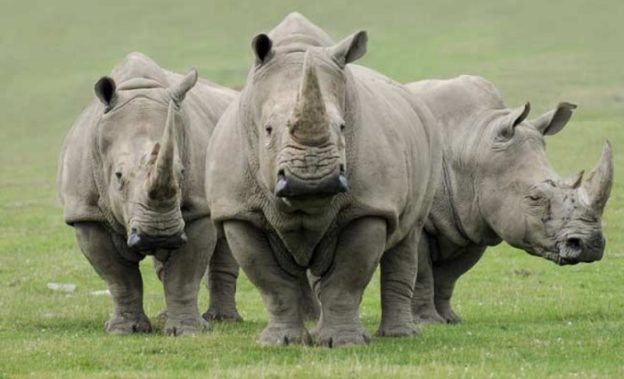

Poaching of rhinos for rhino horn is still a huge threat, and the poachers have got increasingly better equipped. However recently white rhino numbers have been declining due to a surge in poaching, with 15,942 remaining in the wild today. Sadly there are no individuals from the ‘northern’ subspecies of white rhinos left in the wild, and only a handful in captivity.įor the black rhino (slightly smaller, with a more pointed top lip) the worst period was between 19, when around 96% of them were lost to wide-scale poaching. The ‘southern’ subspecies of white rhinos is a conservation success story and had been helped back from under 100 in 1895 to over 20,000 individuals. Poaching of rhinos for their horns and habitat loss are huge threats to both white and black rhinos. Many organizations are working to protect this much loved animal.The rhinoceros is Africa’s armoured giant – like a tank on legs – and has been on our planet for millions of years. The white rhino once roamed much of sub-Saharan Africa, but today is under threat due to poaching fueled by these commercial uses. The horn is also valued in North Africa and the Middle East as an ornamental dagger handle. Many animals have been killed for this hard, hair-like growth, which is revered for medicinal use in China, Taiwan, Hong Kong, and Singapore. In light of the Earths sixth great extinction event driven by man traditional conservation strategies such as habitat protection and ex-situ breeding. Intensive conservation measures were begun and by 1993, the northern white rhinoceros population had increased to 33. Just six years later, only 17 remained in Congo (then Zaire). In 1980, 821 of the animals existed in the wild. The prominent horn for which rhinos are so well known has been their downfall. Worn by time and nature, the Wichita Mountains loom large above the prairie in southwest Oklahomaa lasting refuge for wildlife. The northern white rhinoceros is one of the most endangered animals in Africa. Females use their horns to protect their young, while males use them to battle attackers. Rhino horns grow as much as three inches a year, and have been known to grow up to five feet long. White rhinos have two horns, the foremost more prominent than the other. They may find one another by following the trail of scent each enormous animal leaves behind it on the landscape. Rhinos have sharp hearing and a keen sense of smell.
#Northern white rhinoceros habitat skin
They find a suitable water hole and roll in its mud, coating their skin with a natural bug repellent and sunblock. CNN Hopes that mankind can save the northern white rhino from extinction appeared more remote than ever this week, after scientists announced they will retire one of the last two living.

Under the hot African sun, white rhinos take cover by lying in the shade. Their single calf does not live on its own until it is about three years old. Northern white rhinos were formerly found in several countries in east and central Africa but are now critically endangered, teetering on the brink of extinction, with less than a handful living in a Kenyan wildlife reserve. Females reproduce only every two and a half to five years. Despite this, it is the subspecies most threatened by poaching. White rhinos live on Africa's grassy plains, where they sometimes gather in groups of as many as a dozen individuals. The white rhino recovered from near extinction with numbers as low as 50 100 left in the wild in the early 1900’s, this sub-species of rhino has now increased to 15,940, with the vast majority living in a single country, South Africa. White rhinos graze on grasses, walking with their enormous heads and squared lips lowered to the ground. The 2 remaining white rhinos live at Kenyas Ol Pejeta Conservancy. 1) Our planet is home to five species of rhinoceros the black rhino and the white rhino, which live in Africa, and the Sumatran, Javan and Indian (or greater. Nola, a 41-year-old female, died in 2015. San Diego Zoo Safari Park was the last zoo in the world to have northern white rhinos in its collections. One interesting fact about the White rhino is. 94 southern white rhinos born at the Wild Animal Park between 19. They use their lips to pluck leaves and fruit from the branches. The White rhinos habitat is tropical and subtropical grasslands, savannas and shrub lands. Black rhinos are browsers that get most of their sustenance from eating trees and bushes. They favor areas with plenty of food, shady trees, hiding places, and water for drinking and. The difference in lip shape is related to the animals' diets. White rhinoceroses prefer wide, flat grassland and savanna. Northern white rhinos once ranged across north-western Uganda, southern Chad, south-western Sudan, the eastern part of Central African Republic and north.

The black rhino has a pointed upper lip, while its white relative has a squared lip. They are different not in color but in lip shape. Both black and white rhinoceroses are actually gray.


 0 kommentar(er)
0 kommentar(er)
